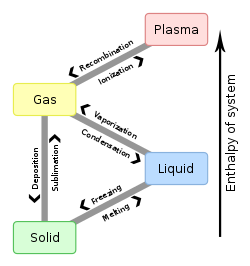Lee-Huang-Yang correction
Appearance
This article is an orphan, as no other articles link to it. Please introduce links to this page from related articles; try the Find link tool for suggestions. (June 2025) |
In condensed matter physics, the Lee-Huang-Yang (LHY) correction is a modification to the mathematical treatment of Bose-Einstein condensate (BEC) systems that manifests as a relative repulsive effect. BEC systems are usually best described by mean-field interactions. But in cases where these interactions cancel out, the systems' behavior is described by the quantum fluctuations of next order term, described by the Lee-Huang-Yang (LHY) correction to the ground state energy. In this regime, it has recently been found that the system can take on fluidic properties.[1][2]
The theory was first enunciated by T. D. Lee, Kerson Huang, and C. N. Yang in a 1957 paper.[3]
References
[edit]- ^ Thomas G. Skov, Magnus G. Skou, Nils B. Jørgensen, and Jan J. Arlt, Observation of a Lee-Huang-Yang Fluid, Phys. Rev. Lett. 126, 230404 (2021).
- ^ Nils B. Jørgensen, Georg M. Bruun, and Jan J. Arlt, Dilute Fluid Governed by Quantum Fluctuations, Phys. Rev. Lett. 121, 173403 (2018).
- ^ T. D. Lee, K. Huang, and C. N. Yang, Eigenvalues and eigenfunctions of a Bose system of hard spheres and its low-temperature properties, Phys. Rev. 106, 1135 (1957).

